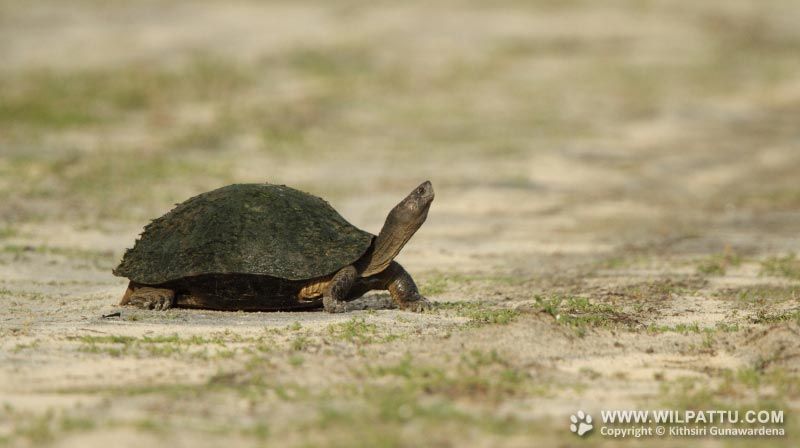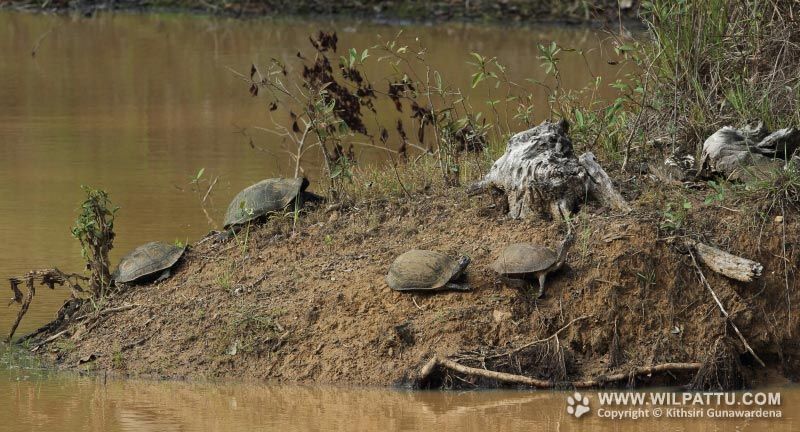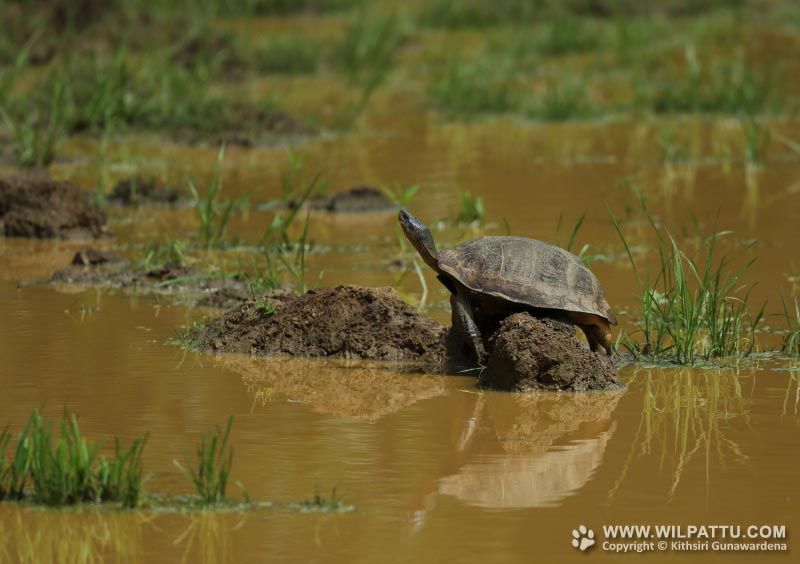
Reptiles ‹‹ Go Back
This species of turtle is found throughout the lowlands and is also native to India, Bangladesh, Myanmar, Nepal, Pakistan and western Thailand. Three subspecies of this South Asian turtle have been recognized: M. t. trijuga and M. t. coronata from India, M. t. indopeninsularis from Bangladesh, Nepal and India and M. t. parkeri from Sri Lanka. Another population identified as M. t. termalis from India, Maldives and Sri Lanka is under consideration and has not been accepted as a subspecies as yet.
Even though the conservation status of the species under reference is regarded as Least Concerned (National Red List 2012), the Parker’s Black Turtle is strictly protected under schedule II of the Fauna and Flora Protection Ordinance as amended by Act No. 22 of 2009 due to the steady decline of its numbers.
This is a common species that is widespread in the lowlands. They are quite common in most still water bodies and waterways within national parks and sanctuaries. I have found these turtles to be widespread throughout the lowlands. They are found even in the city of Colombo and most marshes and waterways. They are still found in the lake at Kandy and the small tank inside the Udawattekele Sanctuary. The highest altitude at which I have seen them has been at Koslanda at 756 meters. They are also found in the Mannar Island and the Jaffna Peninsula and are common in all the dry zone national parks.
These turtles are quite common in most fresh water bodies at Wilpattu. Once at Mahapatessa I observed an interesting behaviour of this species around 5 p.m. Having heard the alarm calls of a troop of Grey Langurs, I parked the vehicle in anticipation of sighting a leopard. Even though the leopard did not oblige, after a while I observed a full-grown turtle of this species walk down the sand dune. The turtle walked to the edge of the water until it was half submerged and started to cover itself with water plants until it was well concealed. Thereafter it stayed motionless until we left; (we had to reach the park entrance by 6.30 p.m.). Even though I did not observe the turtle hunting any animal, it was quite apparent that it camouflaged itself in preparation for a hunt.



